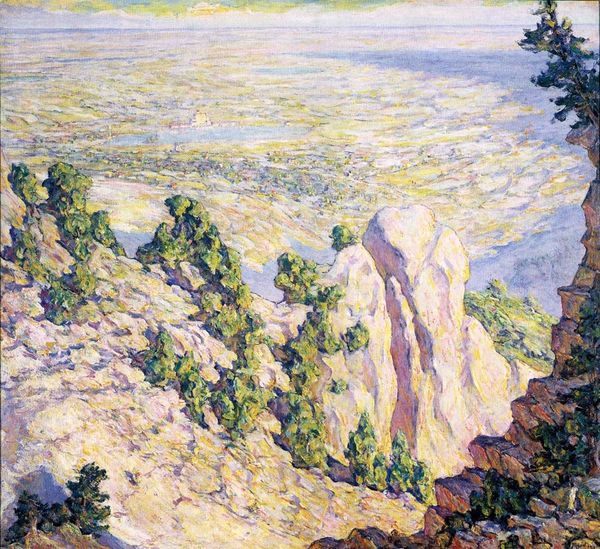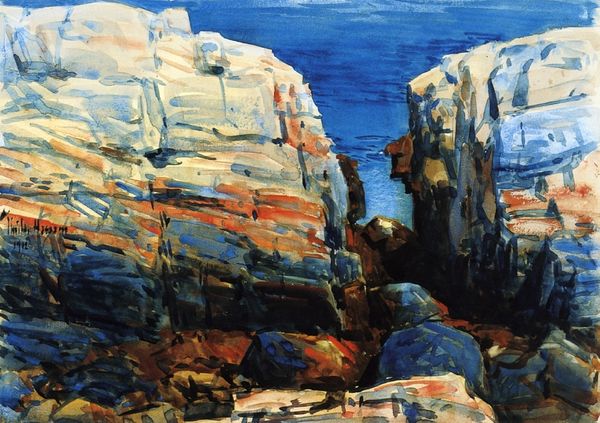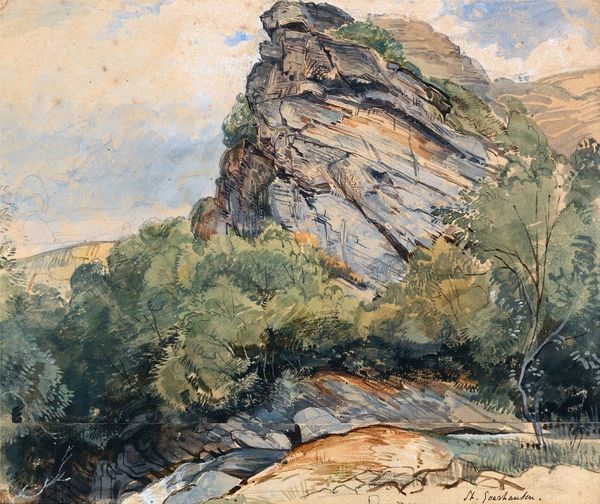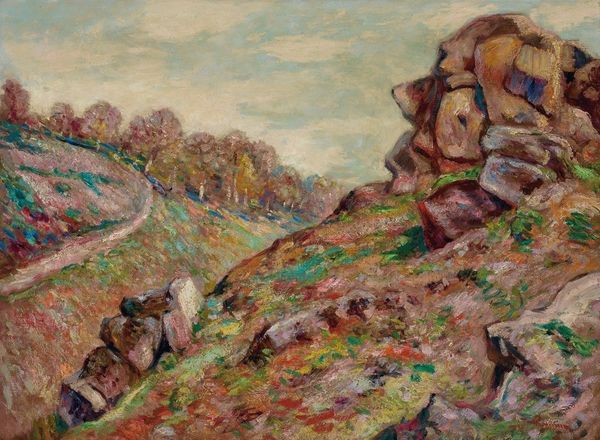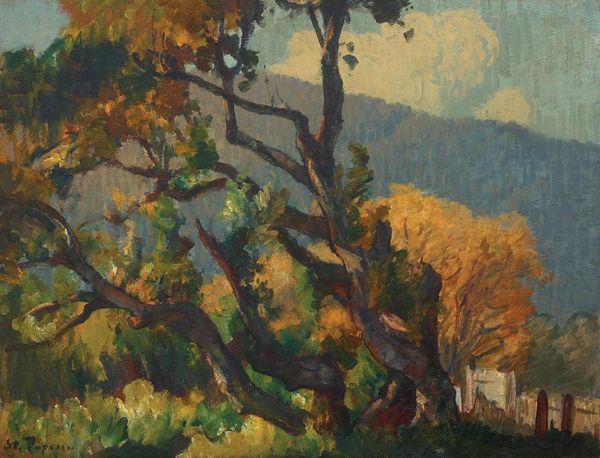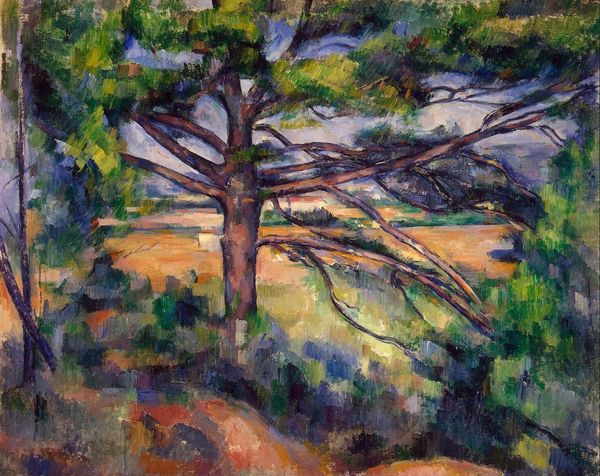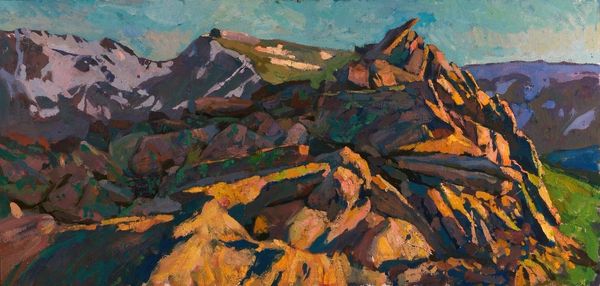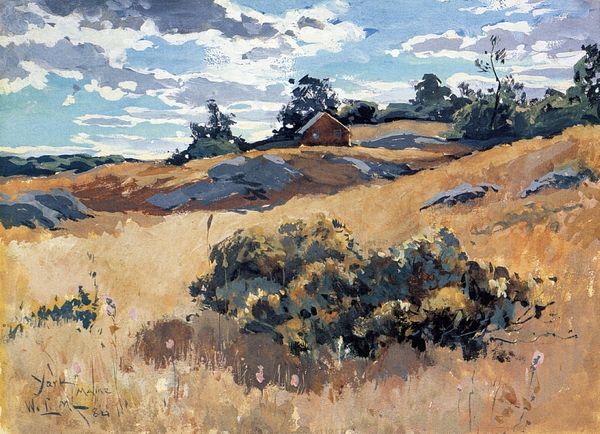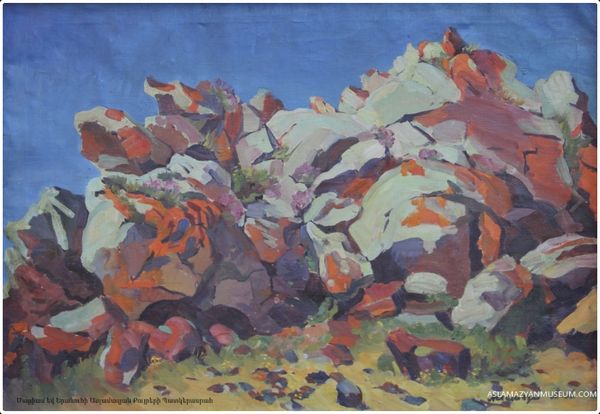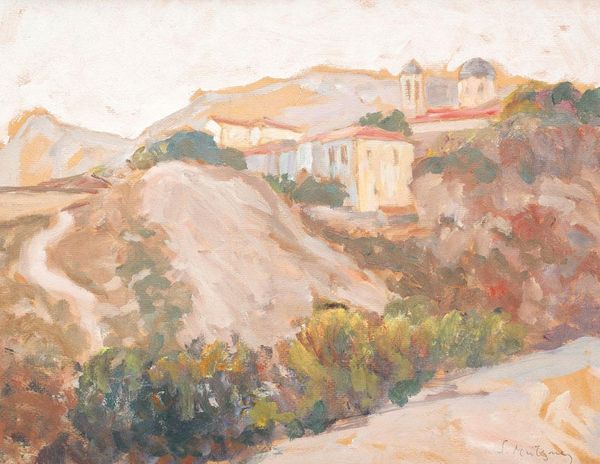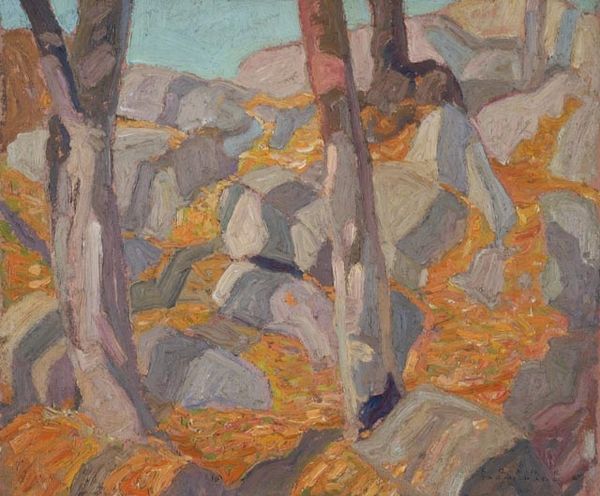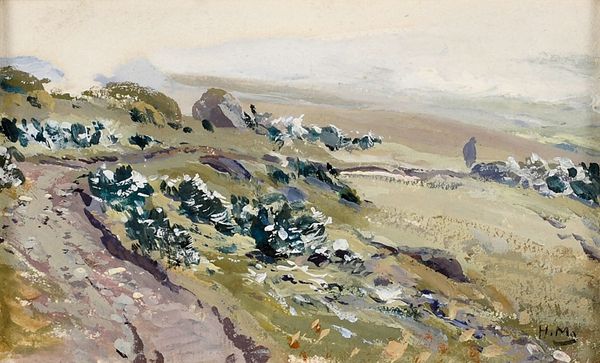
Copyright: Public Domain: Artvee
Paul Cézanne's 'Bottom of the Ravine' is a landscape painted with oil on canvas, inviting us to consider the natural world through its structured forms. Cézanne’s composition emphasizes the underlying geometric structures of the scene, with the interplay of planes and volumes taking precedence over traditional perspective. Notice how the brushstrokes are applied in a deliberate manner, each stroke contributing to the overall form. This technique not only creates texture but also suggests depth and dimension. The subtle gradations of color in the rocks and foliage work together to create a sense of volume and mass. Cézanne's use of color is not merely descriptive but structural, defining the shapes and spatial relationships within the composition. He challenges conventional representation, revealing the fundamental building blocks of visual perception. In doing so, Cézanne invites us to see the world not as a collection of objects but as a dynamic interplay of forms and forces. His work remains a testament to the enduring power of art to reshape our understanding of reality.
Comments
No comments
Be the first to comment and join the conversation on the ultimate creative platform.

